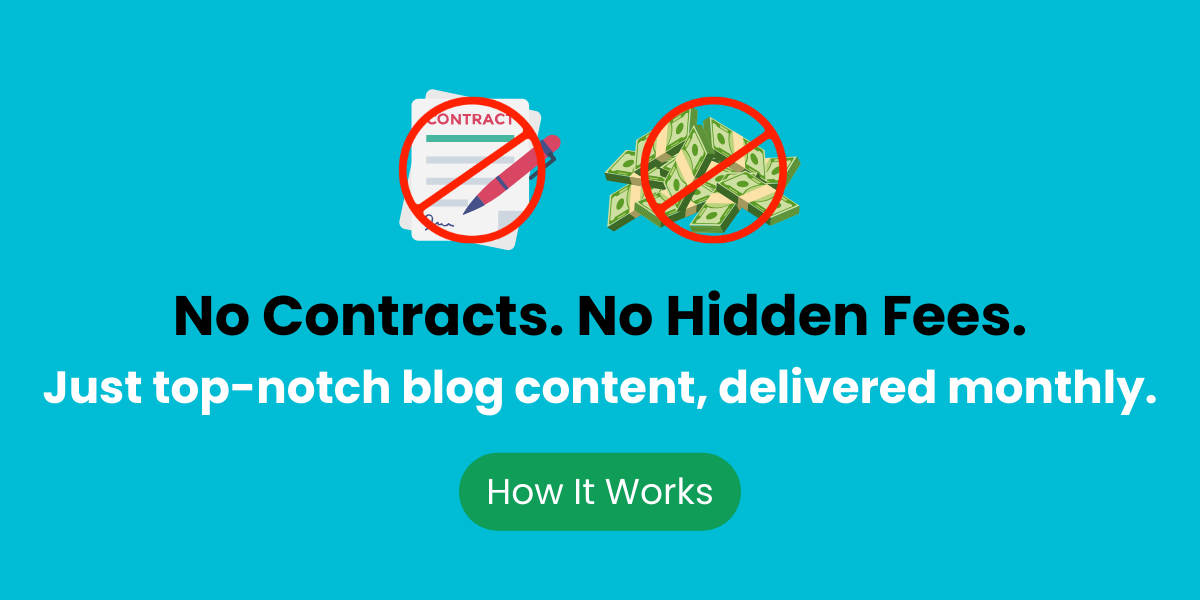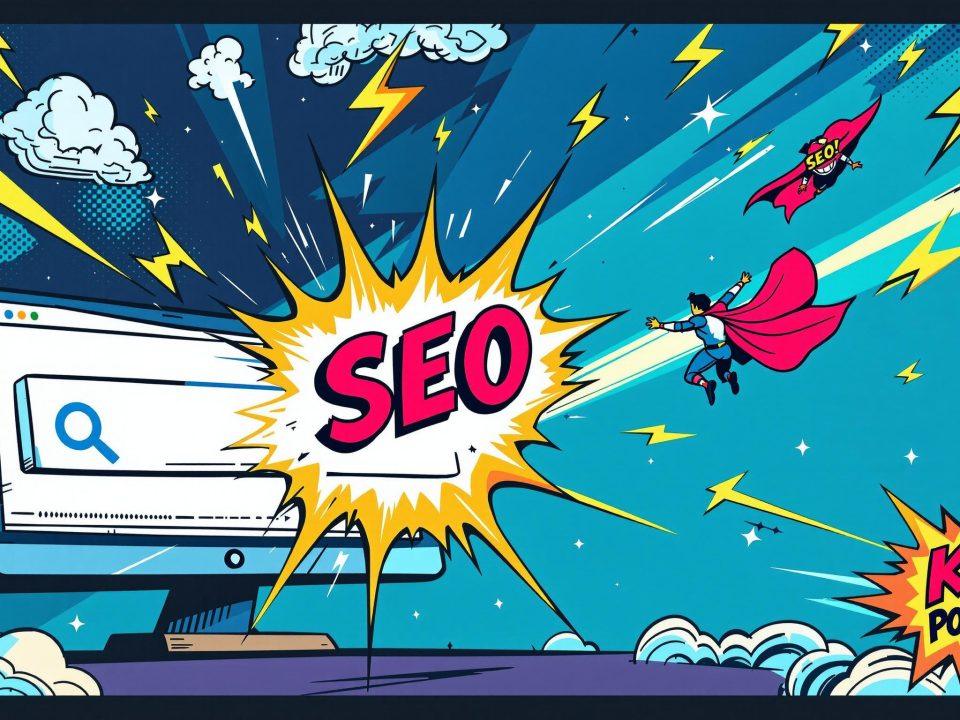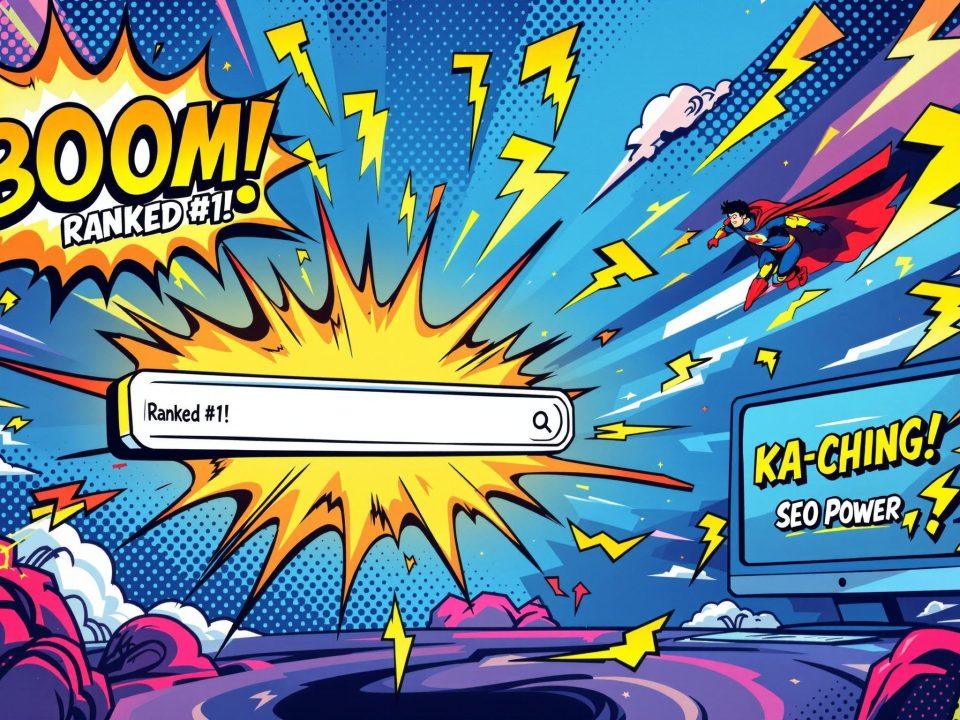Greetings from one local business owner to another! Drawing in a crowd seems to be on your mind quite often. Well, I’ve got a secret weapon for you: local SEO content strategy. It’s not just some fancy marketing jargon – it’s a game-changer.
Think about it: when people in your area search for products or services like yours, you want to be the first one they see, right? That’s where local SEO comes in. When you shape your messages for the people right around you, it’s like sending up a flare that says “hey!” – making it easier to see you, believe in what you do, and bring eager customers straight to your door.
So, are you ready to take your local business to the next level? Let’s dive into the nitty-gritty of crafting a killer local SEO content strategy together!
Optimizing Your Google Business Profile for Local SEO
If you’re a local business owner, you know that getting found online is crucial. But with so much competition out there, it can feel like an uphill battle.
That’s where your Google Business Profile comes in. It’s a powerful tool that can help you stand out in local search results and attract more customers to your business.
First things first: you need to claim and verify your Google Business Profile. This tells Google that you’re the rightful owner of your business listing and gives you control over the information that appears.
To claim your profile, search for your business on Google Maps or Google Search. If it appears, click on the “Claim this business” button and follow the verification steps. If it doesn’t show up, you’ll need to create a new listing from scratch.
Completing All Relevant Information
Once you’ve claimed your profile, it’s time to fill it out with all the relevant details about your business. This includes your business name, address, phone number, website URL, hours of operation, and a description of what you do.
Be as thorough and accurate as possible here. The more information you provide, the easier it is for potential customers to find and engage with your business.
Photos and videos are a great way to showcase your business and give customers a sense of what you’re all about. Add high-quality images of your storefront, products, services, and team members.
You can also add videos that highlight your expertise or give a behind-the-scenes look at your business. Just make sure they’re engaging and informative.
Encouraging Customer Reviews
Customer reviews are the lifeblood of local SEO. They show Google that your business is trustworthy and relevant, which can boost your rankings in local search results.
Encourage happy customers to leave reviews on your Google Business Profile. You can do this by sending follow-up emails, including a link on your website, or even offering incentives like discounts or freebies.
Just remember to respond to all reviews, both positive and negative. This shows that you value customer feedback and are committed to providing a great experience.
Creating Local Content That Resonates with Your Audience
If you run a local shop, hitting the mark with your content can make all the difference. It’s about chatting in a language that feels right at home to your audience. You want to show that you understand their needs, interests, and pain points.
But how do you do that? It all starts with getting to know your local community.
To create content that truly connects with your local audience, you need to understand what makes them tick. What are their biggest challenges and goals? What kind of information are they searching for online?
One way to find out is by conducting market research. This can involve surveys, focus groups, or even just casual conversations with customers and community members.
You can also use tools like Google Analytics and social media insights to see what kind of content your audience engages with most.
Incorporating Local Keywords and Phrases
Once you have a sense of what your local audience is interested in, it’s time to start creating content that speaks directly to them. Spice up your blog posts, social media shout-outs, and website words by weaving in some local slang and familiar phrases.
For example, if you’re a plumber in Denver, you might use phrases like “Denver plumbing services” or “best plumbers in Denver” throughout your content. This helps signal to Google and other search engines that your business is relevant to local searches.
Another way to create local content that resonates is by highlighting events and news that are happening in your community. This could be anything from a local festival or charity event to a new business opening up down the street.
Talking about these issues online shows everyone you’re in tune with local vibes and genuinely care for our neighborhood’s well-being.
Collaborating With Other Local Businesses
Also, linking arms with neighboring enterprises as you craft your posts is something worth considering. This could involve guest posting on each other’s blogs, co-hosting events or webinars, or even just sharing each other’s content on social media.
By working together, you can expand your reach and tap into new audiences while also building relationships with other business owners in your community.
Leveraging Local SEO Best Practices in Your Content Strategy
Creating great local content is just one piece of the puzzle. To really maximize your local SEO efforts, you need to make sure your website and blog are optimized for search engines.
Here are some best practices to keep in mind:
On-page SEO is all about making sure your website’s content and structure are optimized for search engines. This includes things like:
– Using relevant keywords in your page titles, headings, and meta descriptions
– Optimizing your images with descriptive alt text
– Using internal links to help search engines understand the structure of your site
– Making sure your website is mobile-friendly and loads quickly
By getting these on-page elements right, you can help search engines better understand what your website is about and improve your chances of ranking for relevant local searches.
Creating Informative and Engaging Blog Posts
Your blog is a powerful tool for attracting local traffic and building authority in your industry. But to get the most out of it, you need to create content that is both informative and engaging.
This means going beyond just rehashing the same old topics everyone else is covering. Instead, aim to provide unique insights, actionable advice, and real-world examples that your audience can relate to.
Use storytelling techniques, incorporate visuals like images and videos, and don’t be afraid to inject some personality into your writing. It’s all about hitting the sweet spot where readers feel excited enough to spread the word themselves.
Of course, no matter how great your blog content is, it won’t do much for your local SEO if you’re not using the right keywords. So, diving into some good old keyword research to catch those popular local searches? Definitely a smart move.
Once you have a list of relevant keywords, incorporate them naturally throughout your blog posts. Use them in your titles, headings, and body content, but avoid overusing them or engaging in keyword stuffing.
Remember, the goal is to create content that is valuable and relevant to your audience first and foremost. The keywords should support that goal, not detract from it.
Ensuring Mobile-Friendliness and Fast Loading Times
Finally, don’t neglect the technical side of your website and blog. With more and more people using mobile devices to search for local businesses, it’s crucial that your site is optimized for smaller screens.
Use a responsive design that adapts to different screen sizes, and make sure your images and other media files are compressed to reduce loading times.
You can use tools like Google’s Mobile-Friendly Test and PageSpeed Insights to assess your website’s performance and identify areas for improvement.
By following these local SEO best practices, you can create a website and blog that not only attracts local traffic but also provides a great user experience once people arrive.
Building Local Backlinks and Authority Through Guest Posting
Link building is a crucial component of any successful SEO strategy, and this is especially true for local businesses. Hooking links from reputable local websites isn’t just about networking; it’s an ace strategy to shoot up through those pesky search results while magnetizing potential clients directly into your digital yard.
One of the most effective ways to build local backlinks is through guest posting. Here’s how to do it:
The first step in any guest posting campaign is to identify websites and blogs that are relevant to your local audience. These could be other local businesses in complementary industries, local news outlets, or community organizations.
Look for sites that have a strong local presence and engage with your target audience. Tools like Ahrefs and SEMrush can help you research potential guest posting opportunities and assess the quality and relevance of each site.
Crafting Compelling Guest Post Pitches
Once you’ve identified some potential guest posting targets, it’s time to craft your pitch. This is where you reach out to the site owner or editor and propose a topic for a guest post.
Your pitch should be personalized, relevant, and compelling. Show that you’ve done your research and understand the site’s audience and content. Explain how your proposed topic will provide value to their readers and align with their editorial goals.
Be professional, concise, and persuasive in your outreach. The goal is to make it easy for the site owner to say yes to your pitch.
If your pitch is accepted, it’s time to get writing. We’re on the lookout for posts where you’ve clearly hit the books hard but also know how to spin those facts into something captivatingly readable. Aim to provide unique insights and actionable advice that the site’s audience will find valuable.
Use examples, case studies, and data to support your points, and make sure your writing is clear and easy to follow. Don’t be afraid to inject some personality and storytelling into your post to make it more memorable.
Before submitting your post, make sure to proofread it carefully and ensure that it meets the site’s editorial guidelines and standards.
Including Local Keywords and Links Back to Your Site
Finally, don’t forget to optimize your guest post for local SEO. This means including relevant local keywords and phrases throughout the post, as well as linking back to your own website where appropriate.
Be strategic about your link placement, and only include links that are relevant and valuable to the reader. Don’t get carried away stuffing keywords or using dodgy tactics that could knock down your good name or how well you do in search results.
Stick to the best practices for guest posting, and you’ll find yourself creating strong local backlinks. These aren’t just any links; they’re your ticket to boosting site traffic and climbing up in search results.
Measuring and Analyzing Your Local SEO Content Performance
Creating great local content is only half the battle. To really maximize your local SEO efforts, you need to be constantly measuring and analyzing your performance to see what’s working and what’s not.
Here are some key metrics to track and strategies for refining your approach over time:
The first step in measuring your local SEO performance is to set up tracking for key metrics like:
– Organic search traffic from local keywords
– Click-through rates from local search results
– Conversion rates from local visitors
– Reviews and ratings on local directories like Google My Business
– Backlinks from local websites and blogs
Google Analytics alongside its buddy the Search Console—and don’t forget about local legends Moz Local with Yext—are here to guide you through monitoring important stats smoothly so that seeing progress (or identifying slips) is crystal clear.
Analyzing Website Traffic and User Engagement
Once you have tracking in place, it’s time to start analyzing your data to see how your local content is performing. Look for patterns and trends in your traffic and engagement metrics, such as:
– Which local keywords are driving the most traffic to your site?
– Which pages or blog posts are getting the most engagement from local visitors?
– How are users interacting with your site once they arrive? Are they bouncing quickly or spending time exploring your content?
Use this data to identify what’s working well and where there may be opportunities for improvement.
Based on your analysis, look for areas where you can optimize your local content for better performance. This might include:
– Updating old blog posts with fresh, relevant information and keywords
– Creating new content around high-performing local keywords or topics
– Improving the user experience on your website with faster loading times, better navigation, or more engaging visuals
– Building more high-quality local backlinks through guest posting, partnerships, or community involvement
By continuously identifying and addressing areas for improvement, you can keep your local SEO strategy fresh and effective over time.
Continuously Refining Your Local SEO Content Strategy
Finally, remember that local SEO is an ongoing process, not a one-time fix. Keeping ahead of your rivals means always being on your toes – refreshing and evolving your tactics based on new findings and what’s trending now.
This might mean experimenting with new types of local content, like videos or podcasts, or exploring new channels for promotion and distribution. It might also mean staying up-to-date with changes to search algorithms or local SEO best practices and adjusting your strategy accordingly.
The key is to stay agile, data-driven, and customer-focused in your approach. By continually measuring, analyzing, and optimizing your local SEO content performance, you can build a sustainable competitive advantage and drive long-term growth for your business.
Key Takeaway:
Claim and verify your Google Business Profile to control your listing, then pack it with details like hours and photos. Encourage reviews and engage back. Know your local audience well to create content they’ll love, using local keywords for SEO juice. Don’t forget the power of guest posts for backlinks and always measure how you’re doing to keep improving.
Conclusion
Phew, that was a lot to take in, wasn’t it? But hey, you made it through! Now you’ve got a solid foundation for creating a local SEO content strategy that’ll make your competitors green with envy.
Remember, it’s all about understanding your local audience, using the right keywords, and creating content that resonates with them. Whether it’s blog posts, videos, or social media updates, every piece of content you create should be designed to attract, engage, and convert your ideal customers.
So what are you waiting for? Get out there and start implementing these tips in your own local SEO content strategy. Trust me, the results will speak for themselves. And if you ever need a little extra guidance or inspiration, you know where to find me!










